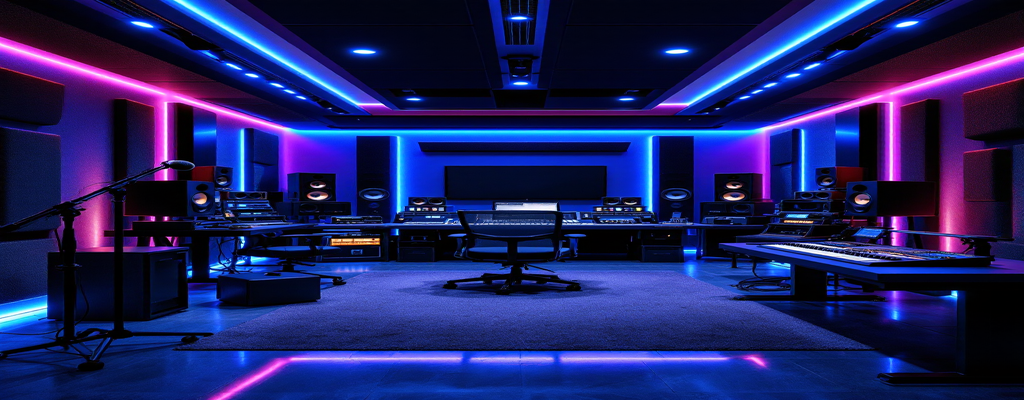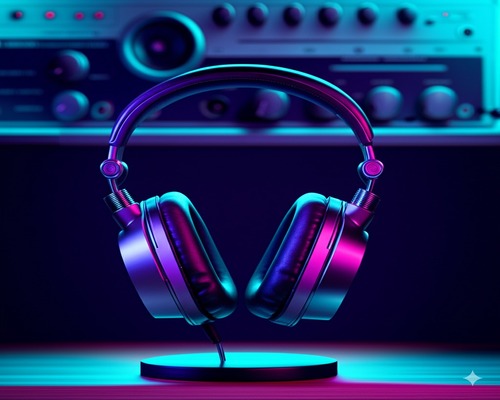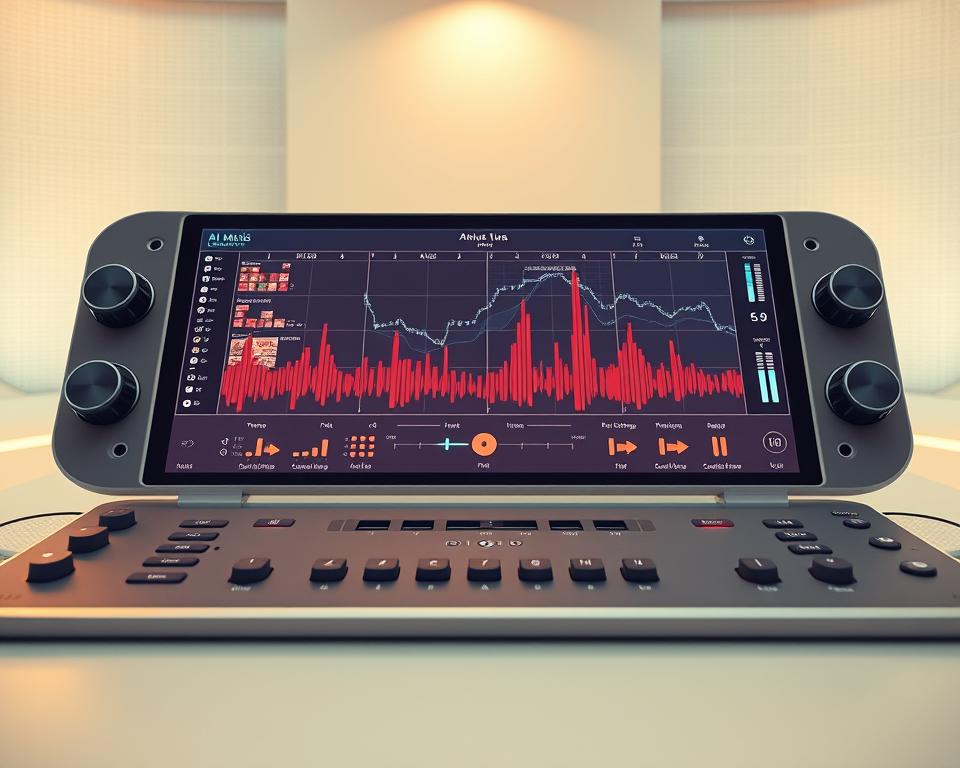
Pop songs with AI music generators are no longer just an experiment—they’re quickly becoming a new standard in digital music creation.
The music industry is buzzing with new tools that turn creative ideas into full productions. Platforms like SOUNDRAW now let artists craft royalty-free music in minutes, blending human creativity with machine precision. Whether you’re scoring music videos or building a playlist, these innovations remove traditional barriers to composition.
Recent updates from leading services showcase why this matters. AI Song Generator and similar tools offer templates that adapt to your style, while some platforms even provide 50% discounts on annual plans. These systems analyze trends to suggest beats, melodies, and structures that resonate with listeners.
This article will guide you through creating catchy pop songs with AI music generators, from basic setups to pro-level techniques. We’ll explore how to customize tracks for commercials, social media, or personal projects without copyright headaches. You’ll also learn to balance automation with artistic control for authentic results.
Key Takeaways
- Modern AI tools simplify music creation while maintaining commercial viability
- Royalty-free options help creators avoid licensing complications
- Top platforms offer time-saving features like preset genre templates
- Discounts and seasonal deals make professional tools more accessible
- Balancing AI suggestions with personal edits yields the best results
As we dive deeper, you’ll discover how pop songs with AI music generators are reshaping what’s possible for independent artists. From background music for videos to full album projects, these tools empower creators at every skill level.
Introduction to AI Music Innovation
Imagine crafting melodies that blend human emotion with computational precision. Modern composition tools now analyze patterns from millions of tracks to generate harmonies that feel both fresh and familiar. This fusion reshapes how creators approach songwriting, especially for projects needing quick turnaround.
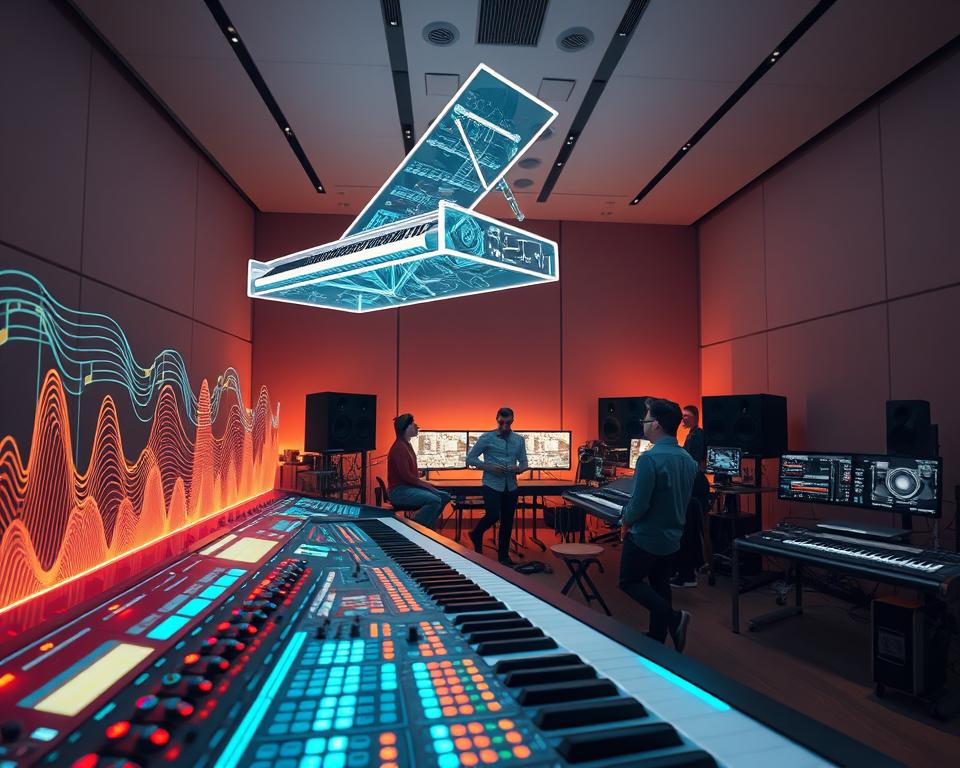
Overview of AI in Music Composition
Machine learning algorithms dissect popular chord progressions and rhythm structures to build original pieces. Platforms like Soundraw.io let users customize tracks by adjusting tempo, mood, and instrumentation. SongR takes a novel approach by transforming existing lyrics into fully produced arrangements.
These systems excel at creating background scores for videos or podcasts. Artists can generate multiple versions of a track within minutes, testing different styles before finalizing their plan. One producer noted, “I revised a chorus eight times in one afternoon – something that used to take weeks.”
Why AI Music Tools Are Game Changers
Three factors make these innovations transformative:
- Speed: Draft complete demos faster than ever
- Adaptability: Switch genres without relearning instruments
- Consistency: Maintain quality across long projects
Content creators now score videos with professional-grade music, while seasoned writers use AI suggestions to break creative blocks. This partnership between intuition and automation opens new possibilities for every type of maker.
Revolutionizing Pop Music Production
Modern platforms are rewriting the rules of hit-making. Artists can now blend retro synths with tropical beats or fuse electronic drops into acoustic ballads – all through intuitive dashboards. This shift lets musicians prototype ideas faster than ever while maintaining commercial appeal.
Trends in AI Pop Production
Leading services like SOUNDRAW use template systems that adapt to viral patterns. Their algorithms scan streaming charts to suggest chord progressions matching current listener preferences. Suno AI takes this further, offering hybrid models that merge multiple genres into cohesive tracks.
Three key developments stand out:
- Beat-switching features for testing alternative song structures
- Mood-based filters that adjust instrument intensity automatically
- Collaboration modes letting teams refine tracks remotely
Insights on Music Innovation in Pop
These tools empower creators to experiment without studio costs. A producer working on a recent dance-pop project shared: “I generated 12 bridge variations in 20 minutes using Suno’s platform. The final mix combined elements from three different AI drafts.”
Platforms now prioritize flexibility. Users can tweak vocal effects, layer percussion, or shift tempos mid-track. This hands-on approach helps artists maintain their signature sound while exploring fresh directions. For content creators, it means scoring videos with radio-ready music that aligns perfectly with visual pacing.
As more musicians adopt these systems, “pop songs with AI music generators” become launchpads rather than finished products. The real magic happens when human intuition guides machine-generated possibilities into unforgettable hooks.
Exploring Pop songs with AI music generators
Digital tools are transforming how hit tracks get made. At their core, machine learning systems analyze decades of chart-topping patterns to predict what listeners crave. This isn’t about replacing artists – it’s about amplifying their creative potential through data-driven insights.
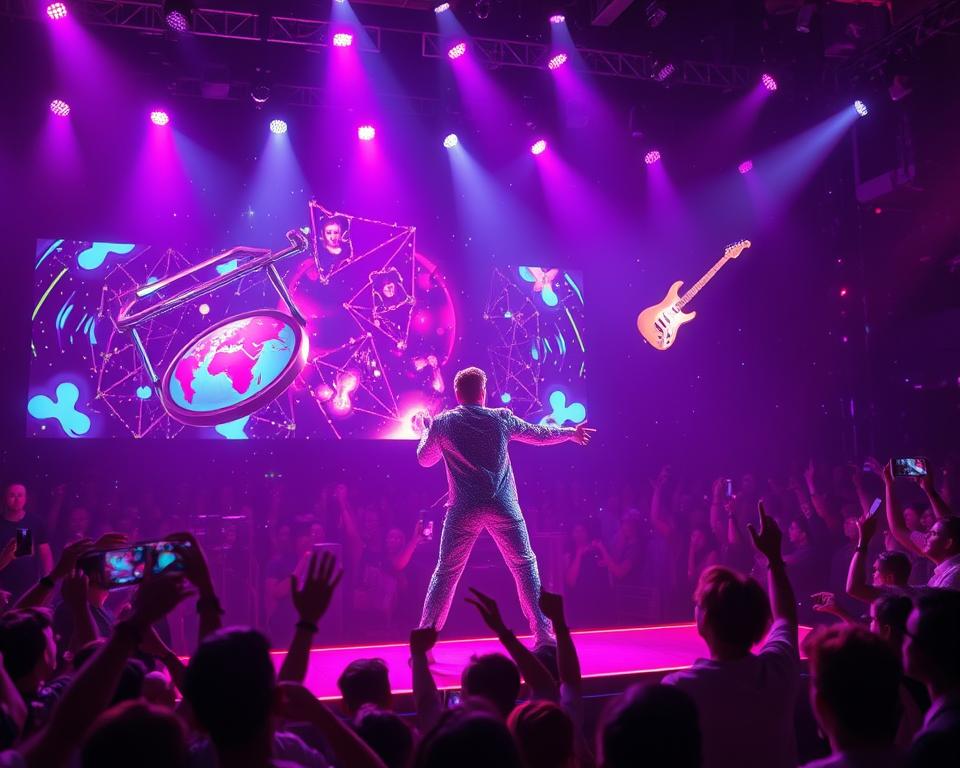
How Machine Learning Enhances Pop Song Creation
Platforms like SOUNDRAW use neural networks trained on millions of successful tracks. These systems identify subtle connections between tempo shifts, vocal ranges, and listener engagement. One producer shared: “The algorithm suggested a synth riff I’d never consider – it became our hook.”
Three key features empower creators:
- Smart customization: Adjust song length or instrument balance in real-time
- Batch generation: Produce 10 track variations per hour
- Instant previews: Test mixes before final download
Services now offer tiered plans catering to different needs. Casual users might choose basic packages for social media videos, while professionals opt for unlimited generation tiers. The AI Song Generator’s recent update lets teams collaborate on tracks, merging human feedback with algorithmic precision.
“We cut album production time by 40% using these tools,” notes indie artist Mara Lin. “The tech handles technical heavy lifting so we focus on storytelling.”
These advancements don’t just speed up workflows – they democratize music-making. Aspiring creators can experiment with studio-quality arrangements previously requiring expensive gear. The result? A surge of fresh sounds blending human ingenuity with computational power.
Top AI Music Tools for Chart-Topping Hits
Today’s creators have unprecedented access to smart composition platforms that balance innovation with practicality. These systems address diverse production needs, from scoring commercials to crafting viral-ready tracks. While powerful, each tool requires strategic use to maximize its potential.
Platform Powerhouses: Features and Workflows
SOUNDRAW stands out with its royalty-free library and adaptive customization. Users can tweak beats, swap instruments, or extend song sections mid-process. One producer shared:
“The stem separation feature saved us hours – we remixed a track for three different projects in one day.”
Suno AI prioritizes speed without sacrificing quality. Its interface generates full arrangements from basic melody ideas, ideal for rapid prototyping. The technology behind these platforms varies – SOUNDRAW uses pattern recognition, while Suno leverages generative algorithms.
Key considerations when choosing tools:
- Project scale (single tracks vs. album production)
- Learning curve vs. time savings
- Output licensing terms
These systems shine when users understand their core technology. For instance, knowing how a song generator analyzes trends helps craft hooks that resonate. While automation handles heavy lifting, human oversight ensures tracks maintain emotional authenticity – the secret behind successful “pop songs with AI music generators” projects.
Delving into AI Pop Music and Generator Capabilities
Cutting-edge platforms now transform basic melodies into polished tracks using neural networks trained on global hits. These systems identify patterns in rhythm, harmony, and listener engagement to craft radio-ready arrangements.
Tools, Techniques, and Trends in AI-driven Music Creation
Riffusion’s spectral diffusion models analyze audio waveforms to build dynamic song structures. MusicGen uses transformer architectures that predict note sequences based on genre-specific datasets. Key innovations include:
- Real-time stem separation for remixing tracks
- Lyric-to-melody conversion algorithms
- Dynamic EQ adjustments matching streaming platform standards
Free tiers often limit output quality to 128 kbps MP3s, while paid plans unlock studio-grade WAV files and batch processing. One platform’s Pro users generate 4x more music tracks monthly compared to free accounts.
Case Studies: Songwriters Using AI and Generating Melodies with AI
Nashville songwriter Clara Reed used Riffusion to create a viral country-pop hybrid. She input guitar riffs into the music generator, then refined the AI’s 12 suggestions into a charting single. “The first draft had a catchy pre-chorus – I just amplified what worked,” she explains.
“Upgrading to a premium plan gave me HD stems for live performances. The download MP3 feature alone saved 10 hours monthly.”
Emerging artists often start with free tools to prototype ideas before investing in subscriptions. This approach lets creators test multiple music generation styles without upfront costs, blending machine efficiency with human artistry.
Creative Strategies Using AI in Music Composition
Melody creation just got a turbo boost. Smart tools now help artists turn half-formed ideas into polished hooks while preserving their unique style. Let’s explore how to harness these systems without losing your creative fingerprint.
Tips for Generating Unique Melodies with AI
Start with seed phrases – hum a rough idea into your phone, then let platforms like AI Song Generator expand it. One producer shared: “I recorded a 5-note riff during breakfast, and by lunch, I had 12 variations to choose from.”
Three proven methods:
- Layer AI suggestions with manual tweaks (change every third note)
- Use “genre-blend” modes to fuse unexpected styles
- Generate unlimited drafts, then combine favorite sections
Incorporating AI Music Tools into Your Creative Process
Treat these systems like a brainstorming partner. During early drafts, use batch generation to explore chord progressions. Later stages benefit from stem splitting – isolate vocals to perfect harmonies while keeping the rhythm intact.
Suno AI’s recent update demonstrates this balance. Their “Inspire” feature suggests melodic variations based on your existing work, helping creators push past creative blocks. As electronic artist Jessa Cole notes:
“I create music faster by letting the tool handle repetitive tasks, freeing me to focus on emotional impact.”
Smart integration looks like this:
- Morning: Generate 20 intro concepts
- Afternoon: Hand-pick elements for refinement
- Evening: Use AI mastering tools for radio-ready polish
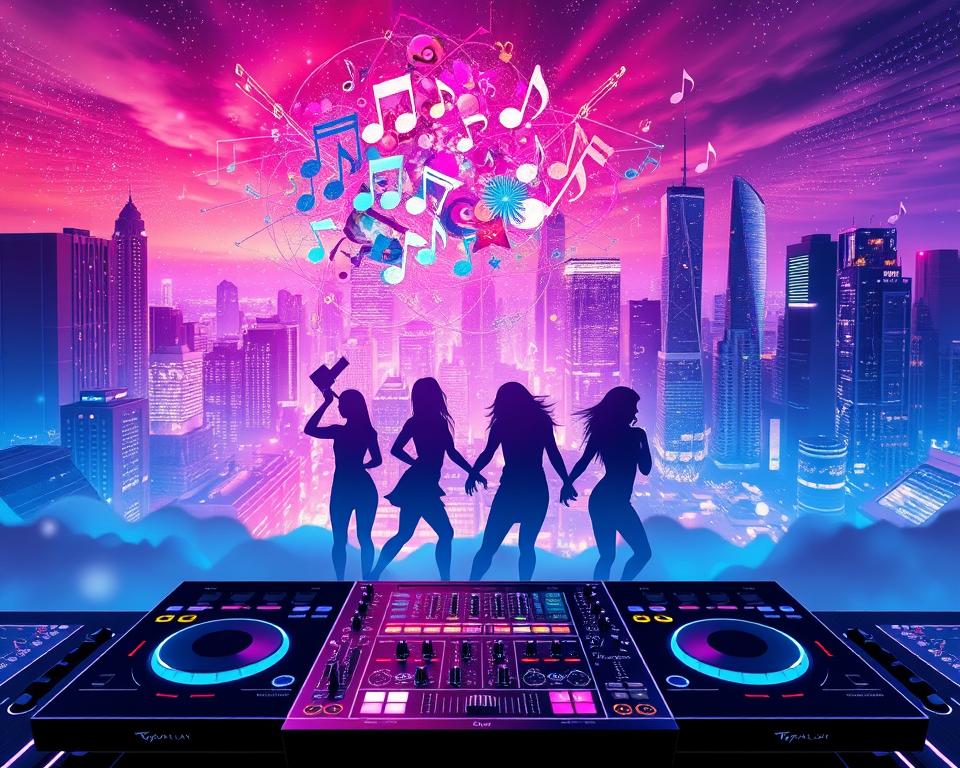
Benefits and Challenges of AI in Pop Song Production
Smart composition tools are reshaping the creative landscape for modern musicians. While they offer groundbreaking advantages, users must navigate technical and artistic hurdles to maximize their potential.
Efficiency and Versatility in Music Generation
Platforms like Beatoven demonstrate how automated systems accelerate workflows. Content creators can produce 10 variations of a music track in under an hour – ideal for tight deadlines. Three standout benefits:
- Instant theme song creation for videos or podcasts
- Bulk generation of royalty-free background scores
- Style adaptation tools for cross-genre experimentation
Mubert’s algorithm showcases this flexibility, crafting ambient pieces and dance beats from the same melody seed. This versatility helps creators use music across multiple projects without licensing hassles.
Overcoming Limitations and Enhancing Creativity
Early generated music often lacked emotional depth, but recent updates address this. One producer noted: “We tweak 30% of AI outputs – that sweet spot between speed and authenticity.” Effective strategies include:
- Layering manual instrumentals over AI foundations
- Using stem splitting to isolate weak elements
- Testing multiple platforms for diverse suggestions
Beatoven users report 40% faster revisions when combining batch generation with selective editing. While tools excel at structure, human input elevates generated songs into memorable experiences. As platforms evolve through user feedback, “Pop songs with AI music generators” become more refined partners in the creative process.
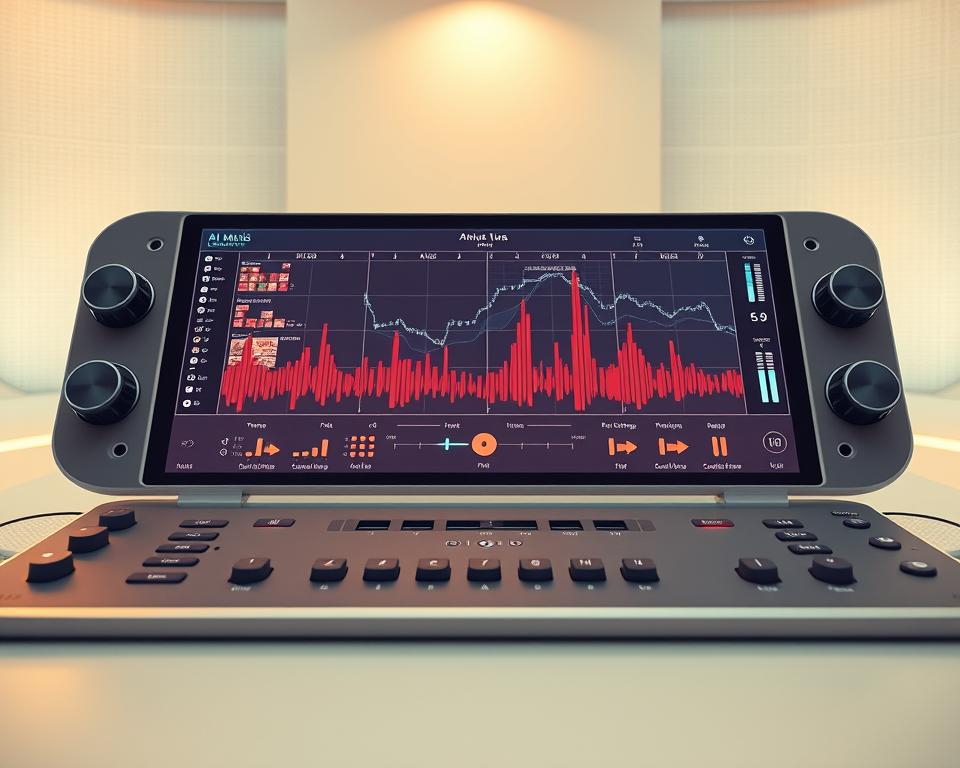
Conclusion about Pop Songs with AI Music Generators
The landscape of music creation has entered a transformative era. Modern composition tools empower artists to craft professional-grade tracks faster than ever while maintaining creative control. From adaptive genre templates to real-time collaboration features, these systems redefine what’s possible for both emerging talents and seasoned professionals.
Platforms like SOUNDRAW and Suno AI demonstrate how using music generators as collaborative partners enhances workflows. They offer unlimited music variations while respecting copyright boundaries – a game-changer for content creators scoring videos or prototyping album concepts. Case studies reveal artists cutting production time by 40% while achieving radio-ready polish through strategic human-AI teamwork.
As trends shift toward hybrid genres and personalized listening experiences, embracing these innovations becomes essential. Start exploring free tiers to experiment with melody generation or beat customization. Whether you’re producing background scores or chart-targeting singles, the future of sound design is here – and it’s waiting for your unique touch.
If you want to learn more about how AI is transforming pop song creation, check out AI Music Creation Tools and AI in Pop Music, which offer insights into various tools and trends within the pop genre.
FAQ’s about Pop Songs with AI Music Generators
Can I use AI-generated tracks for commercial projects?
Yes! Many platforms like SOUNDRAW and Boomy offer royalty-free options. Always check licensing terms to ensure compliance with your specific use case, whether for ads, videos, or streaming.
How do AI tools handle different music genres?
Most platforms let you customize genre styles, beats, and moods. For example, Suno AI supports everything from synthwave to hip-hop, adapting algorithms to match your creative vision.
Are there free plans available for testing AI music generators?
Absolutely. Tools like AIVA and Beatoven provide free tiers with limited downloads. Paid plans unlock features like stems, unlimited tracks, and higher-quality MP3 exports.
Do I need musical training to create tracks with these tools?
Not at all! AI music generators simplify the process. Input keywords like “upbeat summer anthem” or “emotional ballad,” and the platform handles melody, chords, and arrangement.
How does machine learning improve song generation?
Algorithms analyze hit tracks to identify patterns in structure, rhythm, and harmony. This data trains models to produce original melodies that feel familiar yet fresh—perfect for crafting radio-ready hooks.
Can AI tools create full-length albums or just singles?
Many platforms support extended projects. For instance, Amper Music (now part of Shutterstock) allows users to generate cohesive albums by refining themes and maintaining consistent sonic textures.
What’s the biggest challenge when using AI for music?
Balancing automation with human touch. While AI speeds up production, adding unique vocal performances or live instrumentation often elevates tracks beyond generic outputs.
Are AI-generated songs copyright-protected?
Licensing varies by platform. Services like Soundful grant full ownership for paid users, while free tiers may retain partial rights. Always review terms before publishing.
Can I collaborate with other artists using these tools?
Definitely! Export stems or MIDI files to share with collaborators. Platforms like BandLab even integrate cloud-based workspaces for real-time teamwork on AI-assisted projects.
How do I avoid repetitive beats in generated tracks?
Use adjustable parameters like tempo shifts, dynamic variation, or layering presets. Tools like Ecrett Music offer “surprise elements” to inject unpredictability into your compositions.
